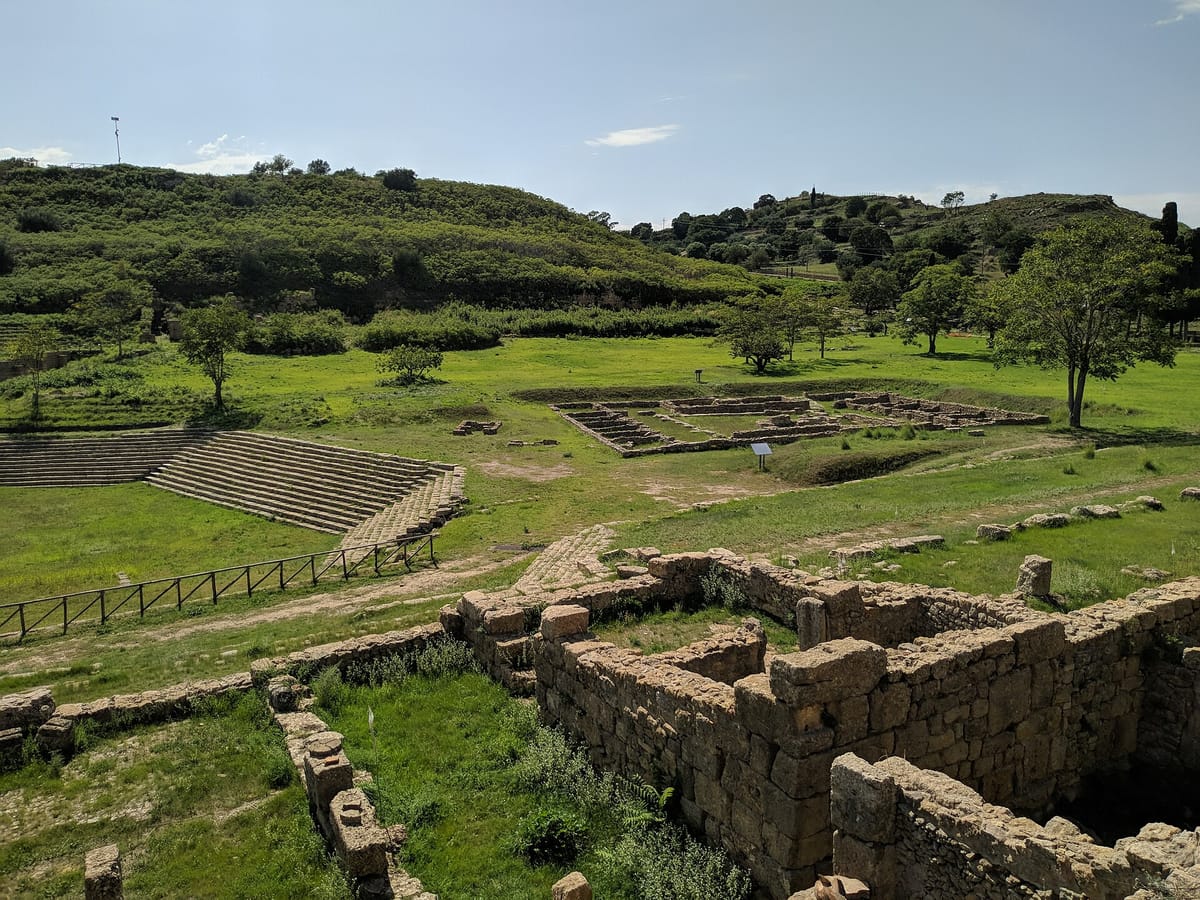“American Excavations at Morgantina” Presentation Transports Attendees to Central Sicily
Last Wednesday, Professor in Classical Studies Christopher van den Berg organized a discussion on an excavation site in Morgantina. The event included presentations by Christy Schirmer, a visiting professor of archaeology at Wesleyan University, and Visiting Lecturer in Classics Alex Moskowitz.

Last Wednesday, students, faculty, and visitors gathered in the Lyceum to hear about the latest discoveries from the ancient world. The presentation, “American Excavations at Morgantina,” transported the attendees to an archaeological site in central Sicily.
Aliki Perroti and Seth Frank ’55 Professor in Classical Studies Christopher van den Berg organized the gathering. He was inspired by a research seminar he currently teaches — “Art and/in the Literature of Greco-Roman Sicily.” Visiting Assistant Professor of History Stacey Murrell moderated the discussion. Researchers reflected on how their work intersects with modern conversations about activism, colonialism, migration, and indigeneity.
The event opened with presentations by Christy Schirmer, a visiting professor of archaeology at Wesleyan University, and Visiting Lecturer in Classics Alex Moskowitz.
Schirmer is part of the Contrada Agnese Project (CAP), an archaeological excavation and research project in Morgantina started in 2013. Morgantina is a settlement that has been shaped by multiple cultures. Greeks settled there during the 6th century BCE, and then it fell under the control of the Hellenistic kingdom of Syracuse. In 211 BCE, the Roman army sacked the city and, ultimately, handed it over to Spanish mercenaries. Schirmer’s presentation focused on two major projects CAP has worked on — the House of Two Mills and the Agora Valley Project.
House of Two Mills was a house for the common people. Schirmer and her teammates discovered wells and hydraulic features in the house. These findings highlighted the concerns Greeks faced — namely, water shortages — and how they dealt with these environmental conditions.
Schirmer proceeded to show an artist’s rendering of what the house may have looked like in its final phase. “The building was only in use for maybe 50 to 70 years, and it was renovated almost continually throughout that time,” she said. “It’s characterized by an open area that was articulated into an exterior courtyard, and the rooms were gradually filled in for various industrial and craft purposes. But there were also people living there, and there’s evidence of household religion and food consumption.”
Agora Valley Project is an ongoing project established in 2022. This initiative investigates the developments of the Roman period in Morgantina. Schirmer’s team discovered stone sculptures and terracotta roof tiles with inscriptions of deer and birds. These findings led the researchers to believe that these public structures may have held a sacred or religious function.
“We have not found a lot of glorious objects in this area, but we did find a portion of a stone sculpture, which appears to be a youth ... holding something that looks like it could be a bird,” Schirmer said. “This really excited us, because we thought maybe we’ve got a connection between those inscriptions speaking about bird sacrifice and [the] youth holding a bird in his hand. Unfortunately, a lot of the material that we’ve been removing so far is from post abandonment period, so it’s not [from] when people were living there ... but things [that] were being dumped in there over a period of centuries.”
Similarly, Moskowitz has spent over a decade working in Morgantina. His work focuses on the reanalysis and republication of a 1990 archaeological survey by Stephen Thompson in the countryside around the site. Moskowitz uses new scientific techniques, including magnetometry and drone-based LiDAR, to remotely scan the archaic sites.
“We’re really lucky that Thompson took really attentive notes and did very close collection, which permitted us to create heat maps, or concentration maps that demonstrate the concentration of ceramics on this site,” Moskowitz said. “That allows us to think not about this site as [just] a point in time ... but also to look a little bit at what life was like at this settlement.”
Moskowitz is interested in relating his work to immigration, colonization, and mobility.
“Sicily remains a major note today for the movement of people throughout the Mediterranean,” he said. “Studying materials from the archaic period provides context to understand modern mobilities.”
Schirmer reflected on how the researchers’ modern perspective may be inherently biased. “We are retroactively identifying a cultural shift and putting a label on it,” Schirmer said. “But we are missing the lived continuity of Morgantina’s residents if we stick to these labels.”
The evening concluded with a Q&A session that ranged from the variety of religious practices in Morgantina to the factors that led to immigration to the site.
“The event gave attendees an opportunity to see parts of the ancient world that are not easily accessed through texts, such as the private lives of individuals, the lives of enslaved people and women, and religious practices,” Visiting Assistant Professor of Classics Niek Janssen said.
Attendees from diverse backgrounds, including town historians, faculty, and students, asked questions during the discussion.
“As a STEM major who has never taken any archaeology or classics class at Amherst, this lecture opened my eyes to how these different disciplines intersect,” Baokun Chen ’29 said. “It made me think about career options outside of STEM that I wouldn’t have considered before.”



Comments ()